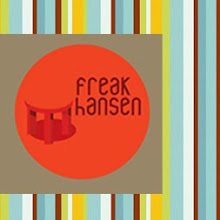
Kay Bojesen was a silversmith, but through his wooden toys he became known as one of Danish applied art's great pioneers. His Grand Prix cutlery received its name when it won first prize in Milan in 1951.
“Just because cutlery is solid in terms of weight, it does not have to feel heavy. With the right balance, the spoon or fork will not attract the attention of the user in a negative way.” — Kay Bojesen
Kay Bojesen (1886–1958) was an apprentice of Georg Jensen, training as a silversmith in 1910. After a few years in Germany and France, he began working as a silversmith in Copenhagen. In the 1930s he realised there was something particularly lively about wood, and his wooden figures have made him one of the great pioneers of Danish art manufacture. Happily, Kay Bojesen was far too curious to restrict himself to the work of refining metals, and he began experimenting with other materials. In the course of his exploration, he discovered wood as a material with very special possibilities for industrial treatment and styling. This discovery led to the classic guardsmen and a whole zoological garden taking shape between his hands. Kay Bojesen’s premise in his work was a conviction that his objects should have life, blood and a heart. People should want to pick them up, and they should radiate humanity, warmth and vibrancy. The monkey was produced in accordance with Bojesen’s motto that lines should smile. In the early 1950s, it was so popular that it was exhibited at the Victoria & Albert Museum in London. In 1990, Rosendahl bought the rights to the production, marketing and sale of Kay Bojesen’s products, including his guardsmen, wooden animals and award-winning Grand Prix cutlery. Kay Bojesen’s productions are characterised by an inherent sense of simplicity, naturalness and clean lines.
Kay Bojesen (1886–1958) was an apprentice of Georg Jensen, training as a silversmith in 1910. After a few years in Germany and France, he began working as a silversmith in Copenhagen. In the 1930s he realised there was something particularly lively about wood, and his wooden figures have made him one of the great pioneers of Danish art manufacture. Happily, Kay Bojesen was far too curious to restrict himself to the work of refining metals, and he began experimenting with other materials. In the course of his exploration, he discovered wood as a material with very special possibilities for industrial treatment and styling. This discovery led to the classic guardsmen and a whole zoological garden taking shape between his hands. Kay Bojesen’s premise in his work was a conviction that his objects should have life, blood and a heart. People should want to pick them up, and they should radiate humanity, warmth and vibrancy. The monkey was produced in accordance with Bojesen’s motto that lines should smile. In the early 1950s, it was so popular that it was exhibited at the Victoria & Albert Museum in London. In 1990, Rosendahl bought the rights to the production, marketing and sale of Kay Bojesen’s products, including his guardsmen, wooden animals and award-winning Grand Prix cutlery. Kay Bojesen’s productions are characterised by an inherent sense of simplicity, naturalness and clean lines.

